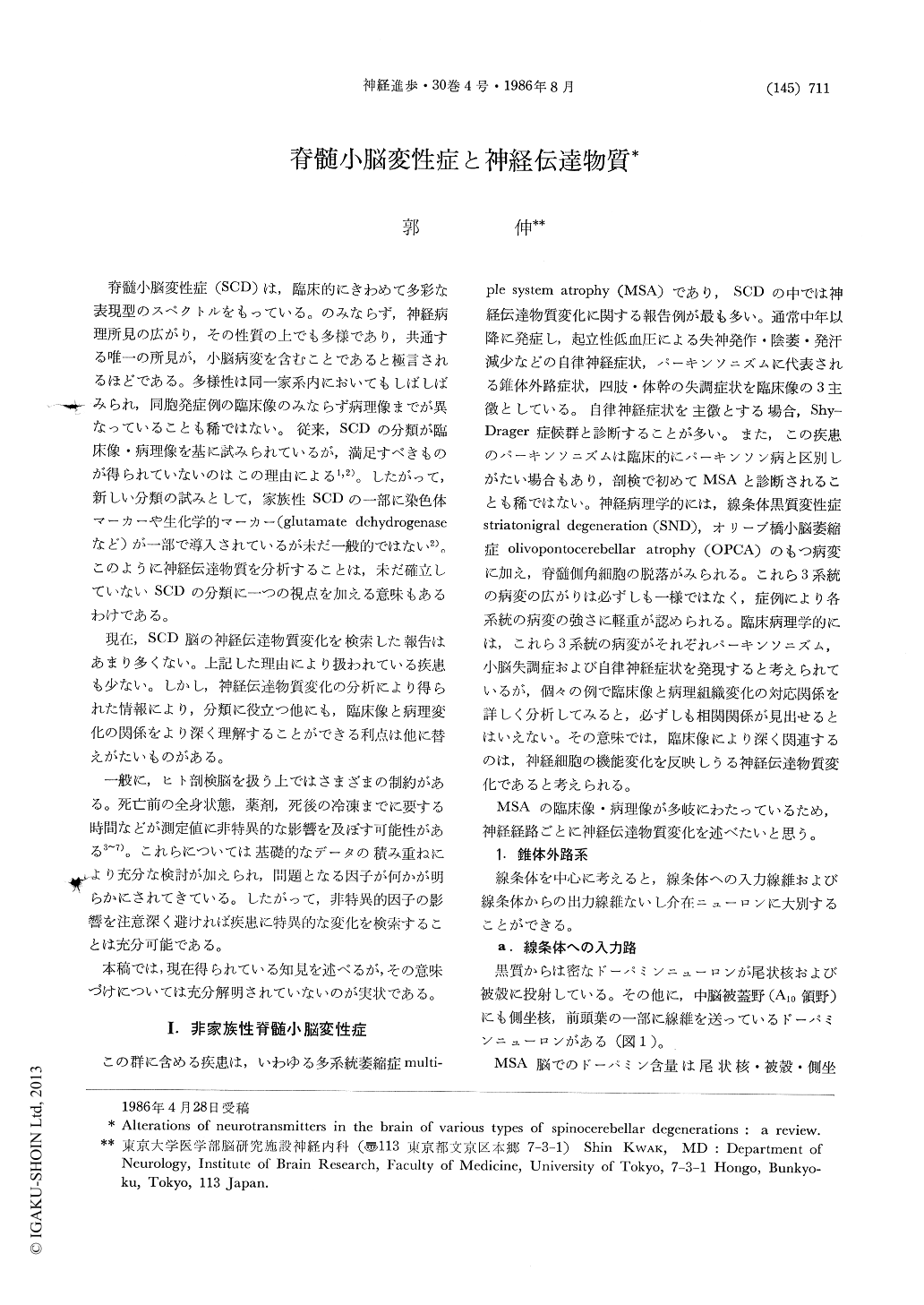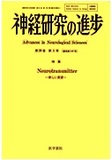Japanese
English
- 有料閲覧
- Abstract 文献概要
- 1ページ目 Look Inside
脊髄小脳変性症(SCD)は,臨床的にきわめて多彩な表現型のスペクトルをもっている。のみならず,神経病理所見の広がり,その性質の上でも多様であり,共通する唯一の所見が,小脳病変を含むことであると極言されるほどである。多様性は同一家系内においてもしばしばみられ,同胞発症例の臨床像のみならず病理象までが異なっていることも稀ではない。従来,SCDの分類が臨床像・病理像を基に試みられているが,満足すべきものが得られていないのはこの理由による1,2)。したがって,新しい分類の試みとして,家族性SCDの一部に染色体マーカーや生化学的マーカー(glutamate dehydrogenaseなど)が一部で導入されているが未だ一般的ではない2)。このように神経伝達物質を分析することは,未だ確立していないSCDの分類に一つの視点を加える意味もあるわけである。
現在,SCD脳の神経伝達物質変化を検索した報告はあまり多くない。上記した理由により扱われている疾患も少ない。しかし,神経伝達物質変化の分析により得られた情報により,分類に役立つ他にも,臨床像と病理変化の関係をより深く理解することができる利点は他に替えがたいものがある。
The spinocerebellar degenerations (SCD) are a large group of progressive disorders characterized clinically by ataxia of limbs and trunk and pathologically by marked loss of neurons in the cerebellar cortex or their connections. Because neuropathological observations differ from case to case even among the siblings of a single family, it is almost impossible to classify the entire types of SCD according to the clinicopathological criteria.Of the varieties of SCD, neurotransmitters have been analysed in the brains of multiple system atrophy (MSA), several families of hereditary olivopontocerebellar atrophy (OPCA), dentatorubropallidoluysian atrophy (DRPLA) and ataxia-telangiectasia.

Copyright © 1986, Igaku-Shoin Ltd. All rights reserved.


